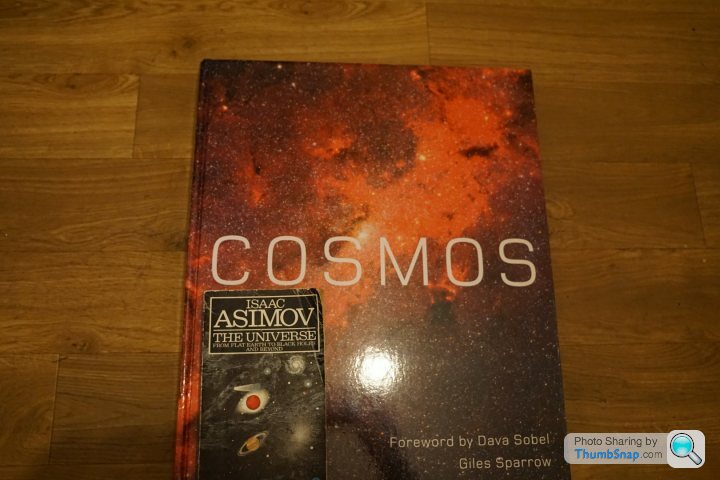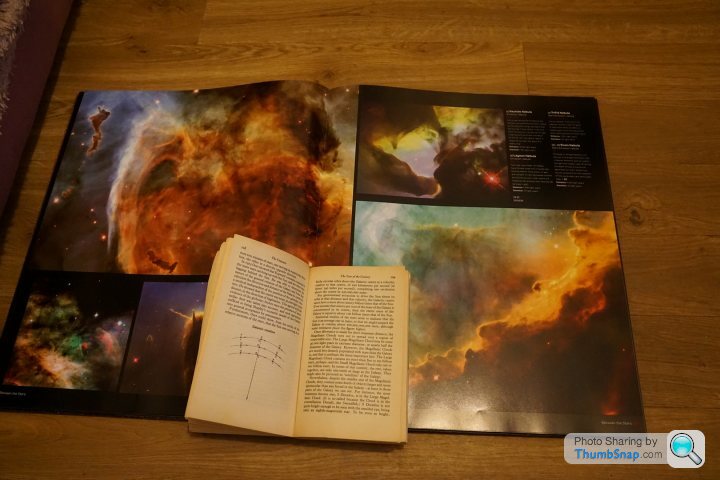Discussion
Just bought two space related books in the last few days (using up my Christmas and birthday book tokens) -
Endurance: A Year in Space, a Lifetime of Discovery - by recently retired astronaut Scott Kelly
The Earth Gazers - On Seeing Ourselves - by Christopher Potter
I'm actually reading the second book as we speak. It takes an interesting perspective on the impact spaceflight has had on society. In many ways, it is a more or less standard history of the development of rockets and spacecraft but it does show the links that exsited from the 1920s and 1930s between all the well known characters who feature in any spaceflight history (Tsiolkovski, Korolev, Glushko, Goddard, Von Braun etc).
However, what it also does is show the influence of those who chose to fund early rocket experiments e.g. the Guggenheim Foundation, the Carnegie Foundation, the Smithsonian Institute, Charles Lindbergh, Soviet Cultural foundations etc.
The role of Charles Lindbergh cannot be understated. He played a big role in obtaining funding for people like Goddard - and was also one of the few Americans who was aware pre-war of the work being done in Germany by Von Braun and his team. He tried to encourage the US government to increase funding for rocket research but was only partially successful. AT best, they could only see rockets as useful as thrust assisters for heavily laden aircraft. They saw no role for rockets as artillery and definitely had no interest n space applications.
There are some slight errors. For example, the author states that Britain and Germany both test fired jet engines in the 1920s. That is obviously not correct as the first gas turbine engines were not bench tested until the mid 1930s.
He also indicates that the US set the "space" line as being 50 miles sometime in the 1920s. As far as I know, the "50 mile" limit was chosen by the US AIr Force in the 1950s in anticipation of the altitudes that they wanted to achieve with the upcoming X-15 programme. NASA has always gone with the FAI "space threshold" of 100 km.
Other than that, so far the book is proving quite informative.
Endurance: A Year in Space, a Lifetime of Discovery - by recently retired astronaut Scott Kelly
The Earth Gazers - On Seeing Ourselves - by Christopher Potter
I'm actually reading the second book as we speak. It takes an interesting perspective on the impact spaceflight has had on society. In many ways, it is a more or less standard history of the development of rockets and spacecraft but it does show the links that exsited from the 1920s and 1930s between all the well known characters who feature in any spaceflight history (Tsiolkovski, Korolev, Glushko, Goddard, Von Braun etc).
However, what it also does is show the influence of those who chose to fund early rocket experiments e.g. the Guggenheim Foundation, the Carnegie Foundation, the Smithsonian Institute, Charles Lindbergh, Soviet Cultural foundations etc.
The role of Charles Lindbergh cannot be understated. He played a big role in obtaining funding for people like Goddard - and was also one of the few Americans who was aware pre-war of the work being done in Germany by Von Braun and his team. He tried to encourage the US government to increase funding for rocket research but was only partially successful. AT best, they could only see rockets as useful as thrust assisters for heavily laden aircraft. They saw no role for rockets as artillery and definitely had no interest n space applications.
There are some slight errors. For example, the author states that Britain and Germany both test fired jet engines in the 1920s. That is obviously not correct as the first gas turbine engines were not bench tested until the mid 1930s.
He also indicates that the US set the "space" line as being 50 miles sometime in the 1920s. As far as I know, the "50 mile" limit was chosen by the US AIr Force in the 1950s in anticipation of the altitudes that they wanted to achieve with the upcoming X-15 programme. NASA has always gone with the FAI "space threshold" of 100 km.
Other than that, so far the book is proving quite informative.
Finished Gene Cernan's "Last man on the moon" last night. I'm not generally in to biographies but really enjoyed it. Very well written and while not technical does explain stuff well, coupled with very good personal views. Surprisingly good descriptions of what his wife went through too considering he wrote it years after they divorced.
Interesting that he really didn't seem to think much of Buzz Aldrin, was that a common view?
Enjoyed it so much I went with Kindle's recommendations and bought John Youngs "Forever Young" last night. Only read the preface so far, which is by Mike Collins who's book "Carrying the fire" I also enjoyed some time back.
Interesting that he really didn't seem to think much of Buzz Aldrin, was that a common view?
Enjoyed it so much I went with Kindle's recommendations and bought John Youngs "Forever Young" last night. Only read the preface so far, which is by Mike Collins who's book "Carrying the fire" I also enjoyed some time back.
A couple of my BIG BOYS BOOKS OF SPACE that I would have got as a kid, still good for budding young 8-14 year olds
Isaac Asimov - The Universe, from Flat Earth to Black Holes and Beyond
(stealing Buzz lightyears quip by 30 years)
and
COSMOS
Photo of big book, little book.


Little and large. Asimov is a fantastic writer of science fiction but also got a Phd in medicine from Columbia and was prof of Biochemistry at Boston Uni, so I guess his love of astronomy shines through here and his writing of the subject is like a writer and so draws the layman onboard.
Couple that with COSMOS which is a huge coffee table book of images and you have a winner. Asimovs writings put large in photos.
Not often you see a full scale centrefold of the sombrero galaxy in a book.....

hell yeah.
My pages of the Asimov book are slowly going yellow through age and me reading it again every 5 years or so. Sadly my daughter does not seem to be interested. That hurts
Isaac Asimov - The Universe, from Flat Earth to Black Holes and Beyond
(stealing Buzz lightyears quip by 30 years)
and
COSMOS
Photo of big book, little book.


Little and large. Asimov is a fantastic writer of science fiction but also got a Phd in medicine from Columbia and was prof of Biochemistry at Boston Uni, so I guess his love of astronomy shines through here and his writing of the subject is like a writer and so draws the layman onboard.
Couple that with COSMOS which is a huge coffee table book of images and you have a winner. Asimovs writings put large in photos.
Not often you see a full scale centrefold of the sombrero galaxy in a book.....

hell yeah.
My pages of the Asimov book are slowly going yellow through age and me reading it again every 5 years or so. Sadly my daughter does not seem to be interested. That hurts

Edited by Gandahar on Sunday 4th November 18:27
RizzoTheRat said:
Finished Gene Cernan's "Last man on the moon" last night. I'm not generally in to biographies but really enjoyed it. Very well written and while not technical does explain stuff well, coupled with very good personal views. Surprisingly good descriptions of what his wife went through too considering he wrote it years after they divorced.
Interesting that he really didn't seem to think much of Buzz Aldrin, was that a common view?
Enjoyed it so much I went with Kindle's recommendations and bought John Youngs "Forever Young" last night. Only read the preface so far, which is by Mike Collins who's book "Carrying the fire" I also enjoyed some time back.
Going to be reading Gene's book over the Christmas break. I had the privilege of meeting and speaking to him in 2015. He and Buzz helped 'pioneer' the move by the US into NBL training for helping prepare for spacewalks.Interesting that he really didn't seem to think much of Buzz Aldrin, was that a common view?
Enjoyed it so much I went with Kindle's recommendations and bought John Youngs "Forever Young" last night. Only read the preface so far, which is by Mike Collins who's book "Carrying the fire" I also enjoyed some time back.
Interesting the point about Buzz - looking forward to the read.
Gassing Station | Science! | Top of Page | What's New | My Stuff




